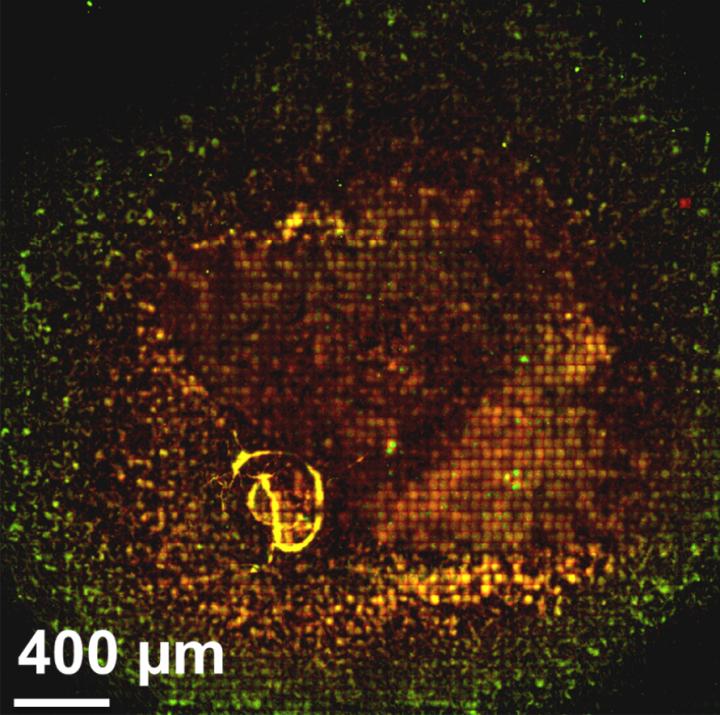Fundamental research in bacterial physiology

Credit: Salim Timo Islam
Research by INRS (Institut National de la Recherche Scientifique) Professor Salim Timo Islam and his PhD student Fares Saïdi has recently revealed that multicellular physiology in the social bacterium Myxococcus xanthus–a bacterium that can actively reorganize its community according to the environment in which it is found–is modulated by the secretion of two natural sugar polymers in separate zones of a swarm. Results from their research, done in collaboration with an international team, have been published in the journal PLOS Biology.
Professor Salim Timo Islam has been carrying out research in bacterial physiology for four years, focusing on the interactions of bacterial cells with each other, as well as with underlying surfaces. Along with his PhD student Fares Saïdi, they are investigating the origins of multicellularity. More precisely, their work revolves around the factors that allow cells to multiply, specialize, communicate, interact, and move. These behaviours are all associated with multicellularity as they promote the expansion of a community of cells and the formation of complex structures.
Their research has characterized two compounds contributing to multicellularity and the distinct areas of production, for each, within a community. Exopolysaccharide (EPS) is produced more by cells at the periphery of the swarm. Production of the second sugar polymer, a novel biosurfactant (BPS), is enriched toward the centre of the swarm. “Since the factors contributing to the development of bacterial communities remain poorly understood, it is very exciting to have identified another,” mentions Professor Islam, a specialist in microbial biochemistry and co-first author of the study along with his PhD student Fares Saïdi.
A Model Bacterium
Multicellularity is typically associated with organisms such as fungi, plants, and animals. As part of this study, the researchers studied the basis for this evolutionary transition on a smaller scale: the bacterium Myxococcus xanthus. This organism has the distinction of being able to reorganize the structure of its population, allowing it to react to different environmental signals and even eat other bacteria.
In response to a hostile environment, such as in instances of nutrient deficiency, this bacterium directs its homogenous population to specialize into three subtypes of cells. These communities thus form 3-dimensional structures, visible to the naked eye. It is thanks to this multicellular lifestyle that they ensure the survival of their community.
###
About the study
The researchers received financial support from the Natural Sciences and Engineering Research Council of Canada, the Banting Research Foundation, the Canadian Institutes of Health Research, the INRS, the PROTEO research network, Aix-Marseille University, the French National Research Agency (ANR), the French National Centre for Scientific Research (CNRS), CONACYT of Mexico, and the National Science Foundation.
https:/
About the INRS (Institut National de la Recherche Scientifique) — inrs.ca
The INRS is a university dedicated exclusively to research and graduate training. Since its creation in 1969, it has actively contributed to the economic, social, and cultural development of Quebec. The INRS is 1st in Quebec and 2nd in Canada in research intensity. It is composed of four interdisciplinary research-and-training centres located in Quebec City, Montreal, Laval, and Varennes, each with its own strategic specializations: (i) Water, Earth, and Environment Centre, (ii) Energy, Materials, and Telecommunications Centre (iii) Urbanization, Culture, and Society Centre, and (iv) Armand-Frappier Health and Biotechnology Centre. The INRS community has over 1500 students, postdoctoral fellows, faculty, and staff.
Contact:
Audrey-Maude Vézina
Service des communications de l’INRS
418-254-2156 (cell)
[email protected]
Media Contact
Audrey-Maude Vezina
[email protected]
Original Source
http://www.
Related Journal Article
http://dx.




